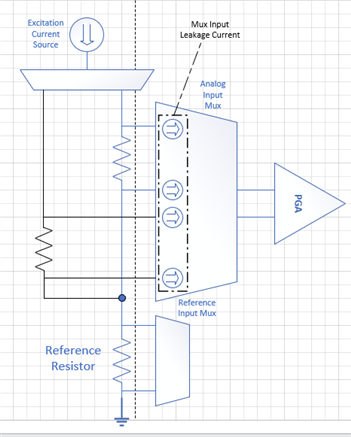Hello,
I would like to know what the input leakage is for the unconnected MUX connections. For example, I have a circuit shown below, which is copied from page 32 of the ADS124S08 datasheet:

I notice that there are many switches and two input protection diodes which all will cause a certain amount of input leakage. I did not see the input leakage specified for these components. How can I find out their maximum current leakage for values?
Thank You,
Ethan


